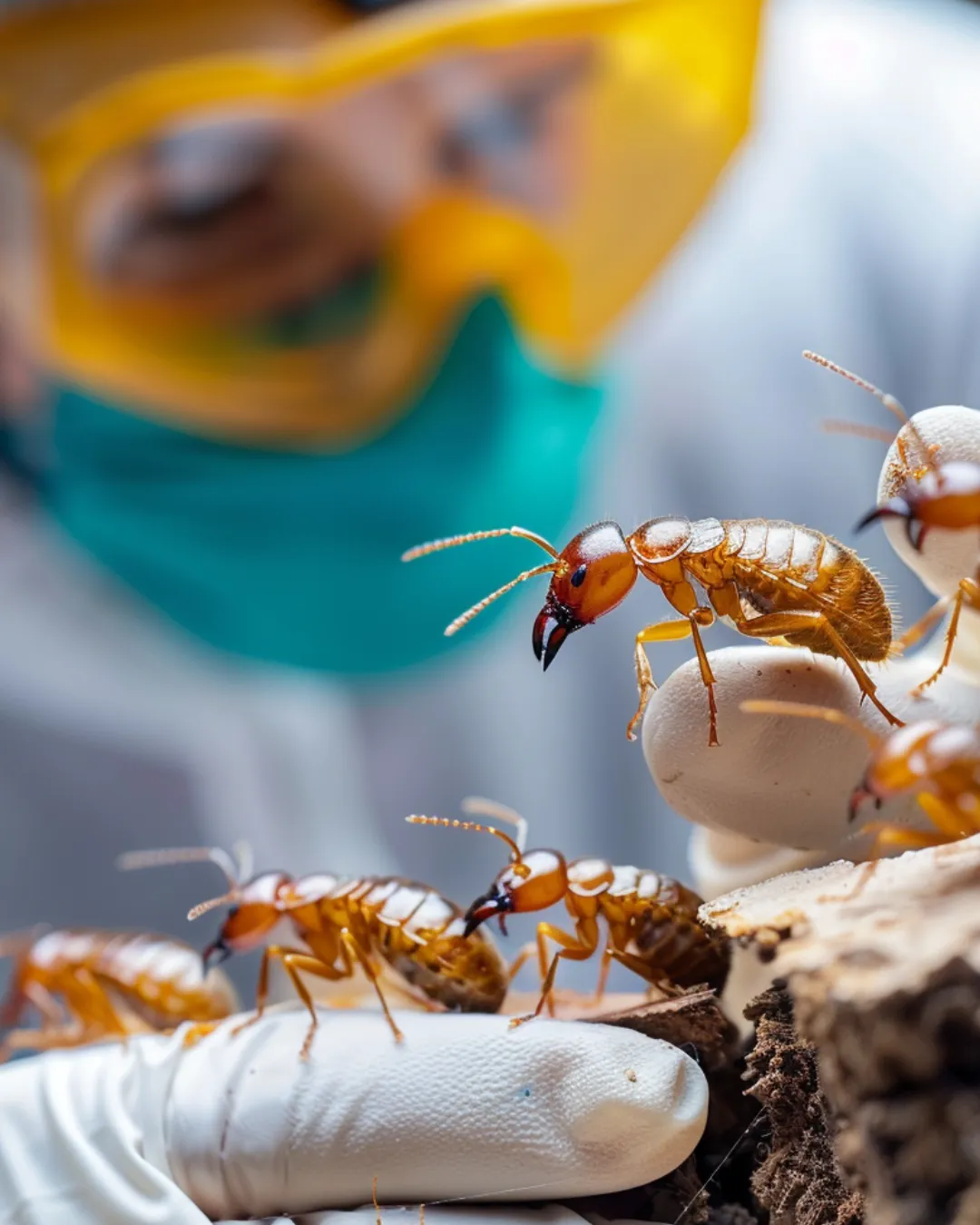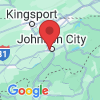The Shield Pest Journal
Check out Shield Pest Appalachia’s most recent blog posts for helpful pest prevention and control suggestions. Our blog covers from detecting common pests to creating tailored solutions in the Tennessee and Virginia areas. Do you have a pest-related question? Contact us today for experienced guidance and solutions targeted to your specific needs.

Termites Beware: Safeguarding Your Home This Summer
Understanding the Threat: Early Signs of Termite Infestation
Early detection can prevent significant damage, making awareness and vigilance crucial. Here’s what to watch for:
Mud Tubes: These are about the size of a pencil and often found near the foundation. Termites use these tubes to travel and protect themselves from the environment.
Discarded Wings: After swarms, termites discard their wings. Finding piles of wings inside or outside your home can indicate a new colony nearby.
Damaged Wood: Wood that sounds hollow when tapped, appears crushed at structural bearing points, or has darkening or blistering surfaces can signal an infestation.
Frass: Termites leave behind droppings known as frass, which look like small piles of sawdust.
Why Early Detection is Critical
Termites work silently and can remain undetected while continuing to cause damage. Early identification is key to preventing widespread structural damage, preserving your home's integrity, and avoiding high repair costs.
Proactive Steps to Protect Your Home
To guard against termite damage, proactive steps are necessary:
Reduce Moisture: Fix leaks, properly ventilate crawl spaces and attics, and direct water away from your home’s foundation with properly functioning downspouts, gutters, and splash blocks.
Eliminate Food Sources: Keep firewood, lumber, or paper away from the foundation or crawl space. Ensure that wooden parts of the house are not in direct contact with the soil.
Regular Inspections: Professional inspections are essential. Shield Pest’s experts can spot early signs of termite activity and help prevent infestations before they become severe.
The Importance of Professional Termite Services
Shield Pest Appalachia’s termite inspection and treatment services are crucial for effective protection. Our trained professionals use advanced technology and methods to both detect and eliminate termites, providing:
Thorough Property Inspections: We assess the vulnerability of your property to termite attacks, identifying risks and early signs of infestation.
Customized Treatment Plans: Based on the specific needs and conditions of your property, we develop targeted strategies using the most effective and least invasive treatments.
Ongoing Monitoring and Maintenance: To ensure that your home remains termite-free, ongoing inspections and treatments are necessary, especially during peak termite season.
Lifecycle of a Termite Colony
Swarming: This occurs typically in the spring when temperature conditions are favorable. Swarming termites leave their existing colony to start new ones, which often leads to visible signs of an infestation.
Colony Establishment: Once a suitable location is found, the king and queen termite begin reproducing. Over time, these colonies grow, and their need for food increases, leading to more noticeable damage.
Maturity: A mature termite colony can consist of millions of individuals that can consume significant amounts of wood, severely impacting the structural stability of homes.
Preparing Your Home for a Termite Inspection
Clear the Perimeter
Remove Obstructions: Ensure that the inspector has unimpeded access to the perimeter of your house. Remove any plants, storage items, or debris that might block access to the foundation. Clearing these items not only aids visibility but also eliminates potential hiding spots for termites.
Trim Landscaping: Bushes, vines, and other vegetation should be trimmed back from the exterior of your home. This not only helps in the inspection but also reduces the risk of termites traveling from the plants to your home’s structure.
Facilitate Access to Critical Areas
Interior Preparation: Inside your home, move furniture, storage boxes, and other items away from walls, particularly in the garage, basement, and attic. These areas are common sites for termite activity due to their access points and favorable conditions (like darkness and moisture).
Subfloor and Crawlspace: If your home has a crawlspace or subfloor areas, ensure that any access hatches are easily reachable. Clear any obstructions and make sure these areas are as tidy as possible to allow for detailed inspection.
Understand the Inspection Process
Know What to Expect: A termite inspection typically involves the inspector checking both the interior and exterior of your home, looking for signs of termite activity and conditions conducive to termite invasions, such as wood-to-ground contact and moisture issues.
Ask Questions: Feel free to ask the inspector what they are looking for and any particular areas of concern they might have. Understanding the process can help you maintain your home better against future termite challenges.
Ensure Accessibility
Unlock Gates and Doors: Ensure that all gates, doors, and fences are unlocked to provide the inspector with easy access to all areas of your property. This includes garden sheds, garages, and other outbuildings.
Pet Safety: Secure pets away from the inspection areas. Pets can be a distraction, and it’s important to keep both the inspector and your pets safe during the process.
Post-Inspection Follow-up
Review the Report: After the inspection, review the inspector’s report thoroughly. It should detail any findings and recommendations for termite treatment or prevention.
Discuss Next Steps: If termites are found, or if your home is at risk, discuss with the inspector the best treatment options and preventive measures you can take to protect your property.
Common Myths about Termites Debunked
Understanding the facts can help you make more informed choices about protecting your home. Here, we debunk some of the most common myths about termites.
Myth 1: Termites Can Eat Through Concrete
Fact: Termites cannot eat concrete. They are capable of navigating through tiny cracks and crevices in concrete to reach food sources, but they do not have the ability to consume concrete itself. It’s the wooden parts of your home that are at risk.
Myth 2: Termites Are Only Found in Old, Decaying Homes
Fact: While termites often infest older homes due to existing vulnerabilities like cracks and moisture issues, they can infest new constructions as well. Termites are opportunistic and will inhabit any structure that provides them with the necessary conditions, such as food (wood), moisture, and shelter.
Myth 3: You Can Get Rid of Termites Simply by Removing Infected Wood
Fact: Removing visibly infested wood might reduce the immediate number of termites you see, but it does not address the colony itself, which might be hidden away from the main site of damage. Effective termite control requires professional treatment to eradicate the colony and prevent future infestations.
Myth 4: Termites Are Only Active in the Spring
Fact: While termite swarms are most common in the spring, termites are actually active year-round. The reason they are more visible in the spring is that this is their swarming season, when they emerge to mate and establish new colonies. However, the worker termites, which cause the damage, remain active all year.
Myth 5: All Termites are the Same
Fact: There are several different types of termites, and each type requires a different approach when it comes to control and prevention. For instance, subterranean termites require different treatment strategies compared to drywood termites. Identifying the type of termite infestation is crucial for effective control.
Myth 6: DIY Termite Control is Just as Effective as Professional Treatment
Fact: DIY termite treatments might provide a temporary fix or control a small localized problem, but they are not effective for eradicating colonies or handling large-scale infestations. Professional pest control services have the tools, knowledge, and products that are far more effective in completely removing termite threats.
Myth 7: Termites Bring Dirt into the Home
Fact: Termites use soil to construct tunnels and to keep their environment moist and protective. However, seeing dirt or mud-like material inside the home could be a sign of subterranean termite activity, as they often bring soil into wooden structures when they build their tunnels.
For more detailed information, expert advice, or to schedule a termite inspection, please visit Shield Pest Appalachia. Ensure your home stays safe and secure with the right support and services.
Office:
1300 University Pkwy, Johnson City, TN 37604, United States
Call
423-379-2775
Copyright 2024. All Right Reserved.

